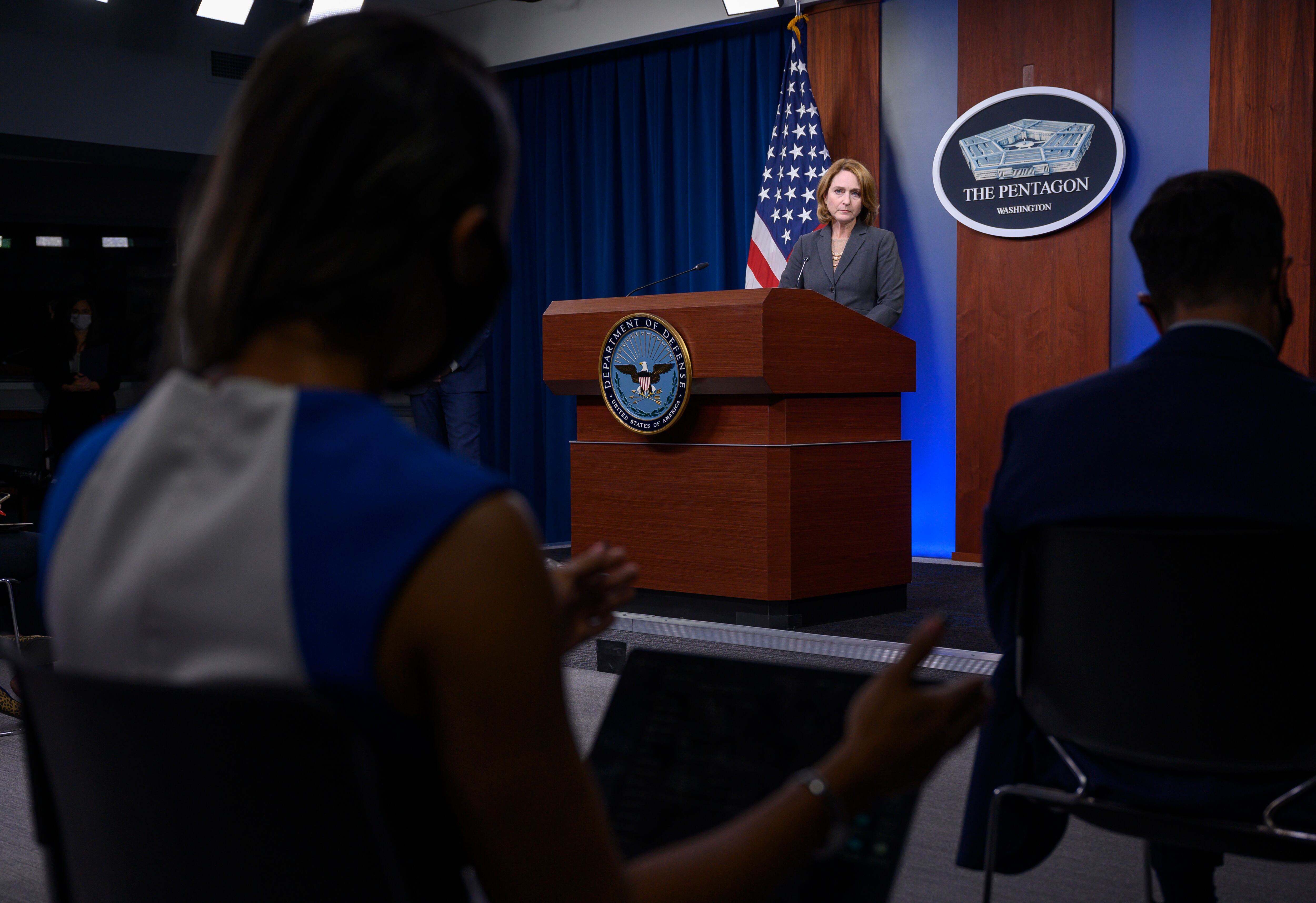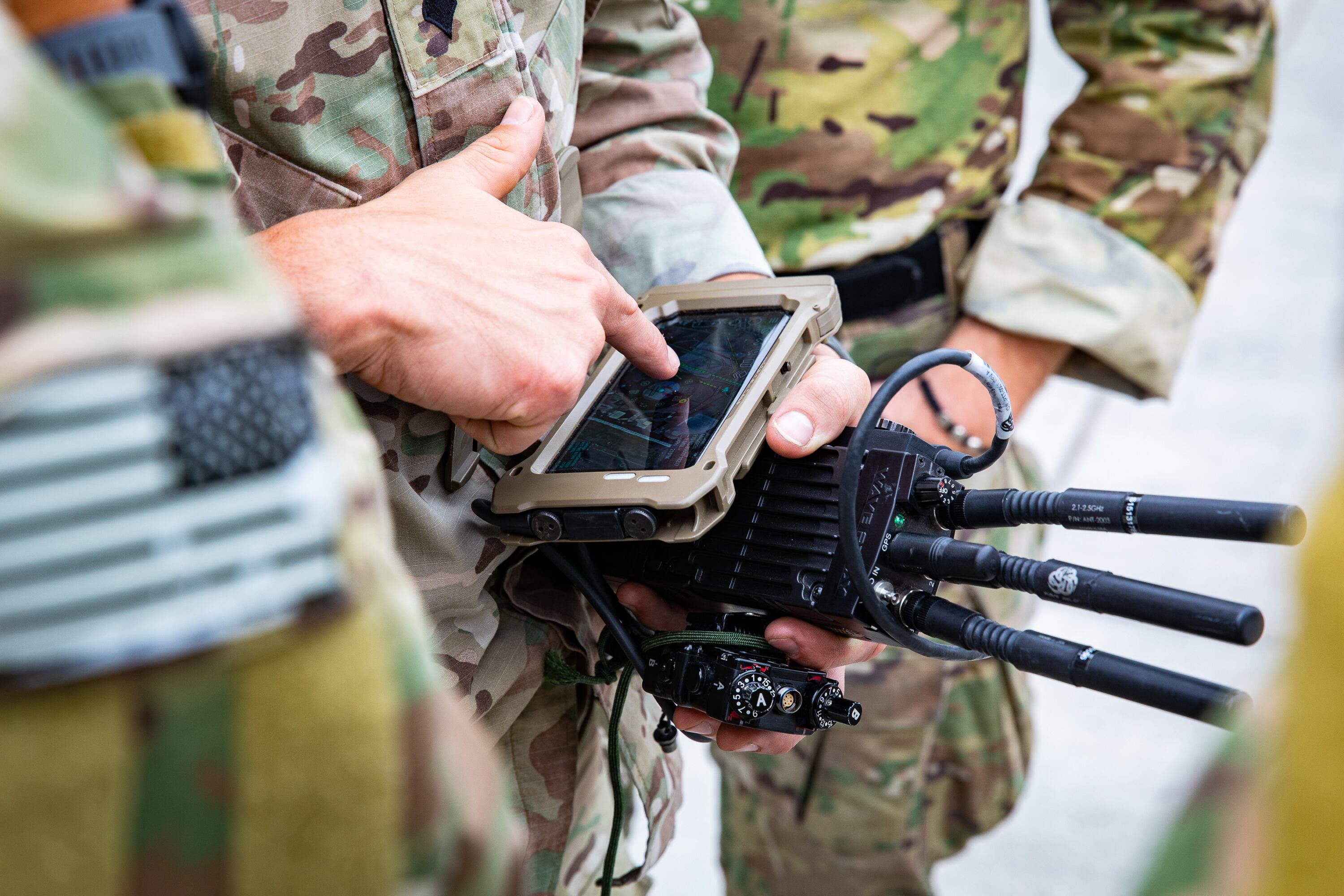WASHINGTON — When Raj Iyer took the reins as the first civilian chief information officer for the U.S. military’s largest service, he made a near-instant connection with Army Lt. Gen. John Morrison, his uniformed counterpart.
The bond, forged “from day one” in late 2020, would prove critical, Iyer said. The Army’s top leaders tasked the pair with bringing to fruition what the non-defense world expects day in and day out: universal connectivity on technology that’s easy to use, no matter the location, distance, weather or information sought.
“It has been an exceptional partnership,” Iyer told C4ISRNET and Army Times on Feb. 1, roughly one month after he announced, via a lengthy LinkedIn post, he would depart. “We had a common mission, a common objective.”
That shared thread, he elaborated, was “to fix all the mess that we had in the Army, that we’ve all seen from either inside or from the outside.” While Morrison, a self-described Army brat, sported decades of insider experience, including a stint as the chief of staff at U.S. Cyber Command, Iyer brought recently acquired private-sector panache.
It would prove a heavy lift and one that will likely outlast the tenures of both men. Critics and watchdogs, including the Government Accountability Office, have long poked the Pentagon for falling behind the tech implementation curve, and at least one viral letter has accused it of repeatedly failing to “fix our computers.”
The Army in June 2020 decided to split the duties of the formerly combined position of CIO and G-6, or senior military adviser to the Army chief of staff.
Leaders chose to hire both a CIO, who would serve as the lead information-technology adviser to then-Secretary of the Army Ryan McCarthy, and a general to oversee policy implementation and soldier priorities. The Senate confirmed Morrison to the latter position the following month.
RELATED

The move was a smart one, said Iyer, who came to the Army from industry and now plans to return. New challenges, such as a mandate for data centricity, demanded new perspectives.
“There’s been so much that’s happened over the last two and a half years that, I mean, we even forget what we did three months ago,” Iyer said.
From November 2020 to February 2023, Iyer advocated for broader digital fluency, expanded cloud computing, stricter contractor accountability and more. The Army has come to grasp, he said, the value of a standalone CIO.
“What the Army has now recognized is the importance of the CIO, the importance of running Army IT like a business,” Iyer said. “Because, at the end of the day, for us to do all this essentially at cost-neutral, meant that you needed somebody with the business skills, the financial skills, to be able to run this Army IT like a business.”
The next Army information technology czar may need more than business savvy, quick-wittedness and Pentagon levels of patience to find success. The role of “my successor,” Iyer predicted, without floating names or candidates, “is going to be a lot more focused on providing oversight, because of all the decisions we’ve already made.”
“I think the model of bringing somebody in from industry, who is always current with technology, and who’s able to bring a good outside perspective, able to ask a lot of tough questions, I think that’s important,” Iyer said.
And that raises another tough question: What’s the future of the Army CIO?
Learning from ‘systemic failure’
One of Iyer’s biggest takeaways from his time atop the Army information technology apparatus is that the service needs to enhance oversight of its modernization projects.
He acknowledged two debacles — the Army’s ongoing efforts to launch a new human resources platform, the Integrated Personnel and Pay System-Army, and its once-scuttled, now-revived tuition assistance program, Army IgnitED — that represent not just “one single point of failure.”
“It was a systemic failure,” Iyer said, bemoaning yearslong requirements, writing processes and projects with “a single systems integrator,” such as with the pay system.
“It’s not soldier-led, it’s not soldier-centered. It’s someone else that’s writing a set of requirements, either based on policy or something else, like legacy systems they’re used to,” he said. “And then, as I said, we set artificial expectations on schedule, and then we turn over to industry and somehow expect miracles. So, I think there’s a lot of blame to go on the Army side.”
The across-the-board failures of the pay system and IgnitED, Iyer said, prompted “deep soul searching” for the CIO and other senior leaders about the Army’s future acquisition needs and practices. He doesn’t think changes, which include a new authority that will permit multi-award developmental contracts akin to weapons development competitions, go far enough.
“Remember, at the end of the day, I do not have authority over an acquisition program that’s run by” the assistant secretary of the Army for acquisition, logistics and technology, Iyer told C4ISRNET and Army Times.
“By statute, by law, the Army acquisition executive, at ASA(ALT), is the only one that can provide oversight over those programs. So at best, the CIO can be an adviser. And I think we try to do everything we can to advise folks. But beyond that, there’s not much the CIO can do,” Iyer said. “We should ask this question: Is that still the best model for the DoD moving forward?”
Iyer, a former executive at international consulting firm Deloitte, recognized the idea was controversial, “because nobody likes acquisition authority taken away from the acquisition organization.” But that doesn’t mean it shouldn’t, at least, be considered.
“Is that the best model for software systems?” Iyer said. “That is the question to be asked because we know that’s not how private sector works.”
Better oversight could improve contractor accountability on the part of the Army, which has historically struggled to diversify competition and keep costs down on information technology modernization projects, Iyer said. In the case of IgnitED, that meant his former employer had to go.
The Army fired Deloitte as its lead contractor for the project in June 2022. The service is instead implementing a version of the Air Force’s tuition assistance platform.
Iyer argued the Army is in a better position now to make “early decisions” on whether to remove or replace contractors. He cited the service’s choice to pull the plug on “three or four” programs in fiscal 2022.
For the new human resources platform, Iyer said the Army had “too much vested in that, and we saw the light at the end of the tunnel” — despite multiple launch delays and public warnings from project officials that they were struggling with data integration between the platform and existing systems, a part of the project handled by a contractor.
The program ran into trouble following its January debut. Faults included a now-resolved outage that led to a backlog of delinquent discharge forms and benefits blackouts for around 25,000 TRICARE recipients.
Head in the clouds
The Army sought $16.6 billion in cyber and information technology funding for fiscal 2023, or about 10% of the service’s budget blueprint. Despite the request being “almost flat,” Iyer told reporters in June, the potential funding would posture the service for the challenges — some known, some not — of 2024, 2025 and beyond.
The bulk of the ask, roughly $9.8 billion, was set aside for the Army network, a modernization priority spearheaded by the Network Cross-Functional Team, led by Maj. Gen. Jeth Rey, the Program Executive Office for Command, Control and Communications-Tactical, led by Maj. Gen. Anthony Potts, and others. Approximately $2 billion was earmarked for offensive and defensive cyber operations as well as cybersecurity research and development. And slightly less than $300 million was expected to be spent on everything cloud.
RELATED

Morrison would go on, at separate events, to describe the near future as a period of “action and acceleration.” The Army, he said, would make swift strides toward widespread cloud migration, uptake and usage, amid a push to be digital-first and access data anytime, anywhere.
The sentiment fits into a Pentagon jigsaw puzzle known as Joint All-Domain Command and Control, or the ability to seamlessly link disparate databases and forces across land, air, sea, space and cyber. Such interconnectedness and rapid sharing of information, defense officials say, will provide the U.S. an advantage against China and Russia, world powers with sizable military science and technology purses.
“We made a very determined, conscious decision that we were going to focus on data,” Iyer said. “It was very clear for the Army, to fight and win in the future, it had to be data-centric warfare, and through multi-domain operations, through JADC2. If you look at every one of those warfighting constructs, they all heavily rely on how well we’re able to integrate data.”
Iyer believes the Army’s network and cloud stock are healthier than before.
Batches of upgraded communications tools, known as capability sets, are under development and rolling out every two years. Some are tailored to infantry, some to Stryker combat vehicles and some to heavier armor, such as the Abrams tank.
The Army Enterprise Cloud Management Agency, an entity that oversees the service’s cloud efforts, is expected to grow and play a pivotal part in a new cloud-contracting center of excellence. And the service is warming up its Enterprise Application Migration and Modernization deal, a $1 billion arrangement Iyer described as the “easy button” for cloud migration.
RELATED

“Between now and 2025, we’re looking at about 1,500 systems in the Army migrating to the cloud,” Iyer said. “That contract is going to be huge for us. And I fully expect, sometime this calendar year, that contract will be awarded.”
Other services, such as the Air Force, with its Cloud One and Cloud One Next initiatives, are making similar moves. The Pentagon, too, is doubling down on cloud with its Joint Warfighting Cloud Capability, a $9 billion follow-up to the Joint Enterprise Defense Infrastructure fiasco. Pentagon leaders have said the cloud capability deal, meant to bridge unclassified, classified and top secret designations, will augment service-led efforts, not commandeer them.
Eye on the clock
Digital transformation, a catchall phrase often invoked to signify the embrace of new tech and the dropping of outdated digital practices, is a team sport, Iyer said. And, as he tells it, Iyer was simply the man on the sidelines with a clipboard, keeping an eye on the clock.
“I will not ask anybody to remember me. It was just about the fact that we, collectively as an Army, made a decision to pivot and to change at the right time. And that’s when we all needed it the most,” Iyer said. “I’m just the head coach. That’s all I want. Everybody else played ball, and they did a fabulous job moving the ball forward.”
Asked by C4ISRNET and Army Times to evaluate his performance over two and a half years, Iyer gave himself “a green” — a positive, passing grade — across 85% of tasks.
“I would say we were 100% right on with the vision that we established in the Army Digital Transformation Strategy,” he said. “There are a few areas that we do have some work to get done, right? And so I won’t say it was all done. But we’re in a good, strategic, sustainable path, which is really, really important.”

At the tail end of Iyer’s stay as CIO, the Army began providing Google Workspace to personnel. By mid-January, more than 180,000 people had access to the collaborative suite, which features email, chat and storage functions.
By early February, the total neared 200,000. By June, Iyer expects a quarter-million to be plugged in. Google confirmed the end goal in a separate blog post.
Workspace serves as a salve to troops who stood to lose access to official email accounts amid a turbulent shift from Defense Enterprise Email and its mail.mil addresses to the Microsoft-powered Army 365 system. The rollout has so far been a success, with few problems reported or passed up the chain, according to Iyer and Army Undersecretary Gabe Camarillo, who discussed the package at a Jan. 12 event in McLean, Virginia.
“I think the way the Army has worked for many, many years is you got to get things done, despite the bureaucracy. A great day for a hardworking person in the Army is to find creative workarounds around the bureaucracy. And if you’re able to do that, and you got your job done, it was a great thing,” Iyer said.
“We’ve got to make sure that the CIO, and what we’re doing,” he added, “is making things easy for everybody, not making it harder.”
Colin Demarest was a reporter at C4ISRNET, where he covered military networks, cyber and IT. Colin had previously covered the Department of Energy and its National Nuclear Security Administration — namely Cold War cleanup and nuclear weapons development — for a daily newspaper in South Carolina. Colin is also an award-winning photographer.
Davis Winkie covers the Army for Military Times. He studied history at Vanderbilt and UNC-Chapel Hill, and served five years in the Army Guard. His investigations earned the Society of Professional Journalists' 2023 Sunshine Award and consecutive Military Reporters and Editors honors, among others. Davis was also a 2022 Livingston Awards finalist.








